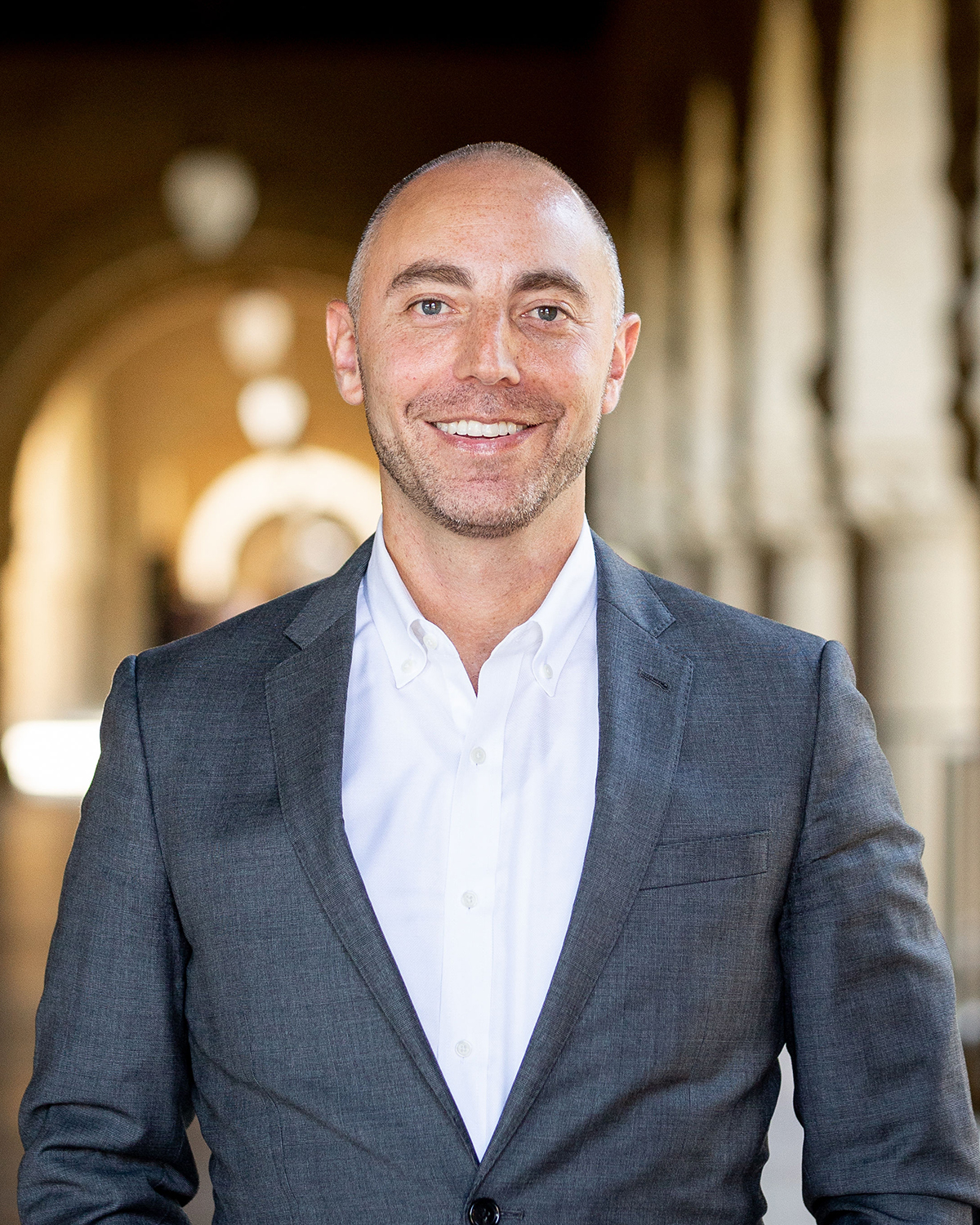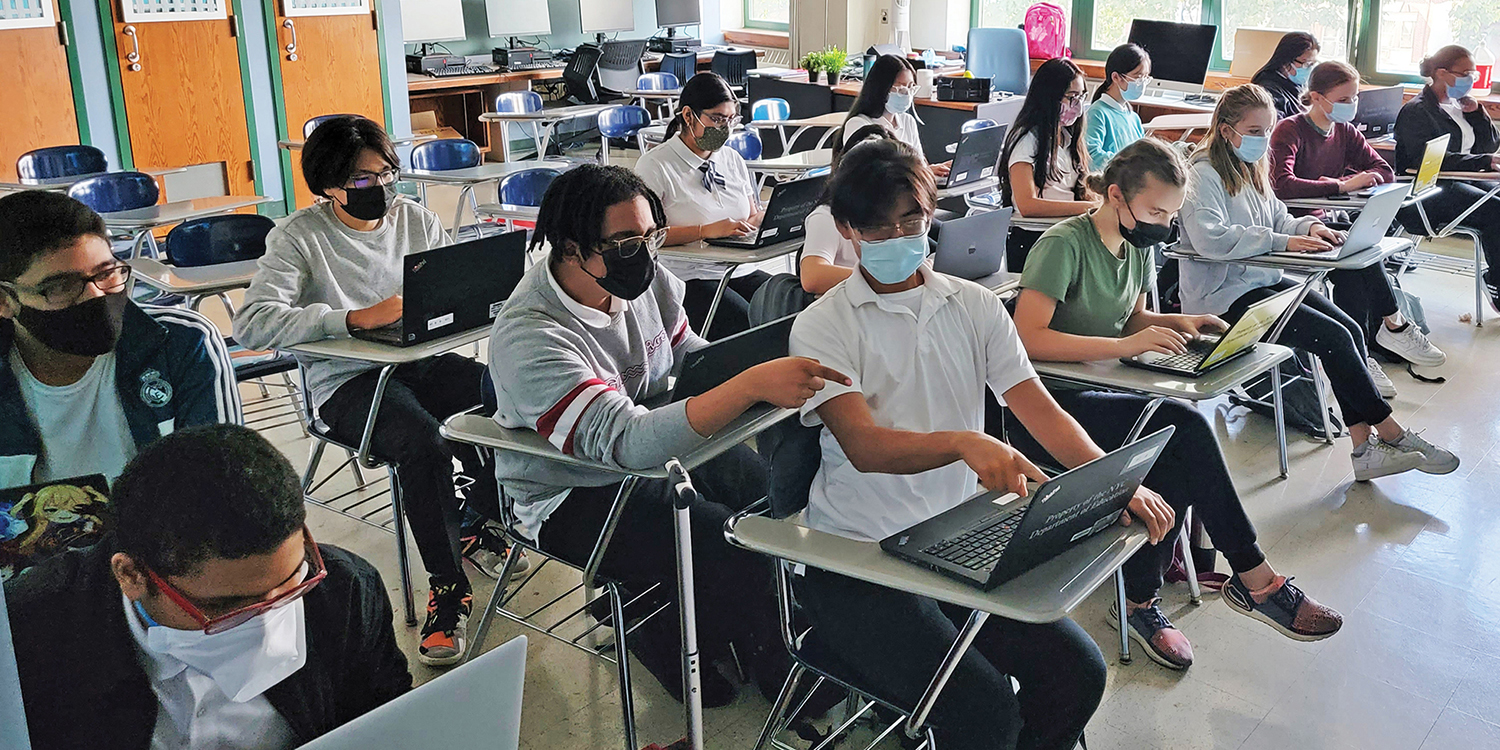Stanford’s new vice provost for digital education on innovating for educational equity
Matthew Rascoff, vice provost for digital education, talks about the newly created office that will marshal Stanford’s teaching and learning expertise and technological capabilities to reach students who have been historically underserved by higher education.
On Oct. 25, Stanford announced the launch of Stanford Digital Education – a new office that will bring the university’s teaching and learning expertise and technological capabilities together in new ways to impact high school students who have been historically underserved by higher education.

Matthew Rascoff is the newly appointed vice provost for digital education at Stanford. (Image credit: Katya Mizrahi)
In a pilot project with the nonprofit National Education Equity Lab, Stanford Digital Education has enrolled more than 220 high school students in a credit-bearing introductory course, Computer Science 105, for the fall quarter. The students come from 15 Title 1 high schools (where at least 40 percent of the students are from low-income households) across the country.
Led by computer science lecturer Patrick Young, CS 105 is designed to expose motivated high school students from less-advantaged backgrounds to college-level work and help them develop the skills and confidence they need to apply to college.
“This pilot course is part of an effort by Stanford to expand the university’s social impact at the local, national and global levels,” said Provost Persis Drell. “Through this new office, we seek to strengthen Stanford’s capacity to innovate in extending educational opportunities to those who have not had access to them before.”
Stanford Digital Education will advance and support digital education initiatives across Stanford’s schools and offices, providing a framework to facilitate internal and external partnerships, incubate new ideas and projects, and spur innovation in Stanford’s online and hybrid education strategies.
Matthew Rascoff, the newly appointed vice provost for digital education and a former special advisor to the provost, will lead the new office. Earlier in his career, Rascoff was associate vice provost for digital education and innovation at Duke University and vice president for technology-based learning and innovation for the University of North Carolina system. He shares his thoughts about the vision behind the creation of Stanford’s new office and how innovation can be harnessed to increase opportunity.
Before we talk about the office, let’s talk about the pilot course. How does it compare with other Stanford courses?
This course, CS 105, Introduction to Computers, is in many respects identical to the course Stanford offers on campus. The learning outcomes and credits are the same and the section leader model would be familiar to many Stanford undergrads and alums.

Students at All City Leadership Secondary School in Brooklyn, New York, meet in their classroom for face-to-face active learning with their teacher and participate in weekly Zoom discussions and office hours led by Stanford alumni and student section leaders. (Image credit: Michael Quinones)
What’s different is who’s taking it. We have enrolled more than 220 low-income students nationwide, from New York to Hawaii. We’re using a novel hybrid format: Students and their teachers meet in their classrooms for face-to-face active learning. Alongside the classroom teachers, we offer weekly Zoom discussions and office hours led by Stanford alumni and student section leaders. Stanford computer science lecturer Patrick Young developed the lectures and assessments. Stanford’s Transforming Learning Accelerator is providing professional development and support to the teachers.
We designed the course to offer with the National Education Equity Lab, a nonprofit organization that shares our mission of spreading educational opportunities to students across the country, regardless of their ZIP codes. The Education Equity Lab has a two-sided network; on one side are Title 1 low-income high schools that wish to provide advanced students with courses for dual (i.e., high school and college) credit; on the other are colleges and universities that wish to offer such courses. We will offer several more courses, including introductory writing and Structured Liberal Education (SLE) with the Lab through a year-long pilot, and hopefully beyond.
Our approach in these courses is college-level rigor with high school-level support. With the right scaffolding and mindset, I think any introductory college course can be made accessible to advanced high school students.
Why do we need this new office, Stanford Digital Education?
Stanford Digital Education has a distinct mission – to advance education innovation for equity and opportunity. There is no question that Stanford has the human and technological capabilities to expand educational pathways. Our small team aims to be a catalyst for more mission-driven digital learning efforts at Stanford.
We believe that collaborating with such like-minded nonprofit organizations as the National Education Equity Lab is essential to addressing the challenges of making higher education more diverse and inclusive. Part of the service our team will offer the Stanford community is curating and negotiating such partnerships. Our vision is to contribute to a more just, equitable and accessible system of education by uniting Stanford’s human and technological capabilities in new combinations.
“These are complex, fundamental problems that we should approach with humility. There are no easy answers, and I am wary of technological ‘solutionism’ that promises quick fixes. Stanford cannot solve society’s challenges alone, but we can contribute to addressing them as part of broader efforts.”
Is the goal to increase the diversity of students applying to Stanford?
Our goal is to increase equity and diversity across selective colleges and universities, including Stanford. This is a systemic issue that requires system-wide approaches. Across the country, where you are born, how much your parents earn and your racial background still play excessive roles in determining your future.
Research by Stanford economist Caroline Hoxby and Christopher Avery showed that the majority of the highest-performing low-income high school students in America never make it to a selective college. And research led by Harvard economist Raj Chetty and colleagues demonstrated that we are missing out on thousands of “lost Einsteins” each year, high-achieving young people who don’t fulfill their creative potential, due to unevenly distributed educational opportunities and social capital.
These are complex, fundamental problems that we should approach with humility. There are no easy answers, and I am wary of technological “solutionism” that promises quick fixes. Stanford cannot solve society’s challenges alone, but we can contribute to addressing them as part of broader efforts.
Who at Stanford will be involved with this effort, and why is university-wide participation important for its success?
Good ideas can come from anywhere – our job is to listen for them.
In my short time at the Farm I’ve encountered many faculty, staff, students and alums with promising ideas. As awful as the pandemic has been, it has opened many minds to the possibilities of digital learning and to the immense societal needs it might address.
As we emerge from the pandemic, we have the opportunity to create an experimental space for those ideas to grow into meaningful innovations. Stanford Digital Education aims to help Stanford innovators better understand educational needs, support promising projects, find partners, launch pilots, evaluate impact and expand initiatives that show results.
Our work is guided by the Digital Education Strategy Group (DESG), which we convene for monthly meetings. It’s composed of faculty and senior administrators from each of Stanford’s schools, Continuing Studies, the offices of the Vice Provost for Undergraduate Education and Dean of Research, and the d.school. In addition to its advisory role, the DESG is responsible for governing Stanford’s university-wide online marketing assets, such as Stanford Online, and channel relationships with platform providers such as Coursera and edX.
Besides the work your team is doing with the Education Equity Lab, are there other projects in Stanford Digital Education’s pipeline?
We’re exploring lots of new ideas, but it’s too early to talk about them. There is one project, though, that we’re not leading that I want to mention. It shows that the idea of expanding access to higher education through digital pathways is taking off at Stanford.
Colleagues from around the university are examining how to encourage more candidates for graduate studies from communities that have been underrepresented at Stanford and other top master’s and doctoral programs. The plan is to offer tuition waivers for established online programs. The goal is similar to what we’re doing with the Education Equity Lab, to prepare prospective graduate students to apply to and flourish at some of the world’s leading research programs at Stanford and beyond.
I invite all members of the Stanford community to visit digitaleducation.stanford.edu, sign up for our upcoming newsletter and attend our town halls and other events. Please get in touch with us if you want to discuss an idea. We’re eager to listen and learn. My hope for Stanford Digital Education is that we can inspire and support the next generation of education innovations, and innovators, for the public good.